Timeline of women's suffrage
Women's suffrage – the right of women to vote – has been achieved at various times in countries throughout the world. In many nations, women's suffrage was granted before universal suffrage, so women and men from certain classes or races were still unable to vote. Some countries granted suffrage to both sexes at the same time. This timeline lists years when women's suffrage was enacted. Some countries are listed more than once, as the right was extended to more women according to age, land ownership, etc. In many cases, the first voting took place in a subsequent year.

.jpg.webp)
| Part of a series on |
| Feminism |
|---|
 |
|
|
Some women in the Isle of Man (geographically part of the British Isles but not part of the United Kingdom) gained the right to vote in 1881.[1]
New Zealand was the first self-governing country in the world in which all women had the right to vote in, but not to stand for, parliamentary elections in 1893.[2]
The colony of South Australia allowed women to vote and stand for election in 1894.[3] In Sweden, conditional women's suffrage was granted during the age of liberty between 1718 and 1772.[4] But it wasn't until the year 1919 that equality was achieved, where women's votes were valued the same as men's.
The Australian Commonwealth Franchise Act of 1902 enabled women to vote at federal elections and also permitted women to stand for election to the Australian Parliament, making the newly-federated country of Australia the first in the modern world to do so, although some states excluded indigenous Australians. In 1906, the autonomous Grand Duchy of Finland, which later became the Republic of Finland, was the first country in the world to give all women and all men both the right to vote and the right to run for office. Finland was also the first country in Europe to give women the right to vote.[5][6] The world's first female members of parliament were elected in Finland the following year. In Europe, the last jurisdiction to grant women the right to vote was the Swiss canton of Appenzell Innerrhoden (AI), in 1991; AI is the smallest Swiss canton with c. 14,100 inhabitants in 1990.[7] Women in Switzerland obtained the right to vote at federal level in 1971,[8] and at local cantonal level between 1959 and 1972, except for Appenzell in 1989/1990,[9] see Women's suffrage in Switzerland. In Saudi Arabia women were first allowed to vote in December 2015 in the municipal elections.[10]
For other women's rights, see timeline of women's legal rights (other than voting).
17th century
1689
 Friesland: Female landowners are allowed to vote in elections to the States of Friesland in rural districts.[11]
Friesland: Female landowners are allowed to vote in elections to the States of Friesland in rural districts.[11]
18th century
1718
 Sweden: Female taxpaying members of city guilds are allowed to vote in local city elections (rescinded in 1758) and national elections (rescinded in 1772)[4]
Sweden: Female taxpaying members of city guilds are allowed to vote in local city elections (rescinded in 1758) and national elections (rescinded in 1772)[4]
1734
 Sweden: Female taxpaying property owners of legal majority are allowed to vote in local countryside elections (never rescinded).[4]
Sweden: Female taxpaying property owners of legal majority are allowed to vote in local countryside elections (never rescinded).[4]
1755
 Corsica: Female suffrage in the independent republic's Diet (assembly; rescinded upon annexation by France in 1769)[12]
Corsica: Female suffrage in the independent republic's Diet (assembly; rescinded upon annexation by France in 1769)[12]
1756
.svg.png.webp) Massachusetts Bay: (still under British crown up until 1776) town of Uxbridge, Massachusetts: One woman, Lydia Taft, is allowed to vote in the town meeting[13]
Massachusetts Bay: (still under British crown up until 1776) town of Uxbridge, Massachusetts: One woman, Lydia Taft, is allowed to vote in the town meeting[13]
1776
 New Jersey (US state): later rescinded in 1807
New Jersey (US state): later rescinded in 1807
19th century

1850s
1853
- Vélez Province in what was then the New Granada Republic (Colombia) grants universal suffrage to men and women. The Supreme Court annulled the provision for women.[18]
1856
1860s
1861
 South Australia – Australian colony of South Australia: property-owning women were given the right to vote.
South Australia – Australian colony of South Australia: property-owning women were given the right to vote.
1862
 Sweden: limited to local elections with votes graded after taxation; universal franchise achieved in 1919, which went into effect at the 1921 elections.[19]
Sweden: limited to local elections with votes graded after taxation; universal franchise achieved in 1919, which went into effect at the 1921 elections.[19] Argentina: limited to local elections, only for literate women in San Luis Province
Argentina: limited to local elections, only for literate women in San Luis Province
1863
 The Grand Duchy of Finland (
The Grand Duchy of Finland ( Russian Empire): limited to taxpaying women in the countryside for municipal elections; and in 1872, extended to the cities.[19]
Russian Empire): limited to taxpaying women in the countryside for municipal elections; and in 1872, extended to the cities.[19]
1864

.svg.png.webp) Victoria – Australian colony of Victoria: women were unintentionally enfranchised by the Electoral Act (1863), and proceeded to vote in the following year's elections. The Act was amended in 1865 to correct the error.[20]
Victoria – Australian colony of Victoria: women were unintentionally enfranchised by the Electoral Act (1863), and proceeded to vote in the following year's elections. The Act was amended in 1865 to correct the error.[20] Kingdom of Bohemia – Austrian Empire: limited to taxpaying women and women in "learned professions" who were allowed to vote by proxy and made eligible for election to the legislative body in 1864.[19]
Kingdom of Bohemia – Austrian Empire: limited to taxpaying women and women in "learned professions" who were allowed to vote by proxy and made eligible for election to the legislative body in 1864.[19]
1869
 United Kingdom of Great Britain and Ireland: limited to single women ratepayers for local elections under the Municipal Franchise Act.[21][22][23][24]
United Kingdom of Great Britain and Ireland: limited to single women ratepayers for local elections under the Municipal Franchise Act.[21][22][23][24]- United States – incorporated Territory of Wyoming: full suffrage for women.[25]
1870s
1870
- United States – Utah Territory passed a law granting women's suffrage. Utah women citizens voted in municipal elections that spring and a general election on August 1, beating Wyoming women to the polls.[26] The women's suffrage law was later repealed as part of the Edmunds–Tucker Act in 1887.
- May 10, 1872, New York City: Equal Rights Party nominates Victoria C. Woodhull as their candidate for US President.
1880s
1881
 Croatia: Female taxpayers allowed to vote in local elections (rescinded in 1895).[27]
Croatia: Female taxpayers allowed to vote in local elections (rescinded in 1895).[27]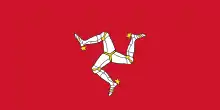 Isle of Man (self-governing British Crown dependency, with its own parliament and legal system) (limited at first to women "freeholders" and then, a few years later, extended to include women "householders").[28] Universal suffrage / the franchise for all resident men and women was introduced in 1919. All men and women (with a very few exceptions such as clergy) could also stand for election from 1919.[1]
Isle of Man (self-governing British Crown dependency, with its own parliament and legal system) (limited at first to women "freeholders" and then, a few years later, extended to include women "householders").[28] Universal suffrage / the franchise for all resident men and women was introduced in 1919. All men and women (with a very few exceptions such as clergy) could also stand for election from 1919.[1]
1884
 Ontario—Canadian province: limited to widows and spinsters to vote in municipal elections; later extended to other provinces.[29]
Ontario—Canadian province: limited to widows and spinsters to vote in municipal elections; later extended to other provinces.[29]
1888
- United States: Proposed Constitutional Amendment to extend suffrage and the right to hold office to women (limited to spinsters and widows who owned property).[30]
1889
- The municipality of
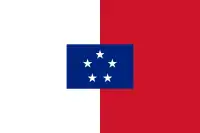 Franceville in the New Hebrides (universal suffrage within its short existence.[31] Loses self-rule within months)
Franceville in the New Hebrides (universal suffrage within its short existence.[31] Loses self-rule within months)
1890s
1893

 New Zealand: first self-governing colony in the world in which all women are given the right to vote in parliamentary elections. However, women were barred from standing for election until 1919.[2][32]
New Zealand: first self-governing colony in the world in which all women are given the right to vote in parliamentary elections. However, women were barred from standing for election until 1919.[2][32] Cook Islands (British protectorate) universal suffrage.[33]
Cook Islands (British protectorate) universal suffrage.[33] Colorado (US state) (first state in the union to enfranchise women by popular vote)[34]
Colorado (US state) (first state in the union to enfranchise women by popular vote)[34]
1894
 South Australia: universal suffrage, extending the franchise from property-owning women (granted in 1861) to all women, the first colony in Australia to do so.[35][36][37]
South Australia: universal suffrage, extending the franchise from property-owning women (granted in 1861) to all women, the first colony in Australia to do so.[35][36][37] United Kingdom of Great Britain and Ireland: Local Government Act 1894 confirms single women's right to vote in local elections and extends this franchise to some married women.[22][24] By 1900, over 1 million women were registered for local government elections in England.[21]
United Kingdom of Great Britain and Ireland: Local Government Act 1894 confirms single women's right to vote in local elections and extends this franchise to some married women.[22][24] By 1900, over 1 million women were registered for local government elections in England.[21]
1895
 South Australia: South Australian women became the first in the world to stand for election.[35][36][37] This right had been granted the previous year in an act of the South Australian Parliament.
South Australia: South Australian women became the first in the world to stand for election.[35][36][37] This right had been granted the previous year in an act of the South Australian Parliament.
1896
1898
 Denmark: Danske Kvindeforeningers Valgretsforbund (Danish Women's Society's Suffrage Union) founded in Copenhagen
Denmark: Danske Kvindeforeningers Valgretsforbund (Danish Women's Society's Suffrage Union) founded in Copenhagen
1899
 Western Australia: the Australian colony of Western Australia
Western Australia: the Australian colony of Western Australia
20th century
1900s
1901
 South Australia (Australian state): were allowed to vote in Australia's first federal election
South Australia (Australian state): were allowed to vote in Australia's first federal election Western Australia (Australian state): were allowed to vote in Australia's first federal election
Western Australia (Australian state): were allowed to vote in Australia's first federal election
1902
.svg.png.webp) Australia: The Commonwealth Franchise Act 1902 gave women the right to vote at federal elections on the same terms as men. Women in South Australia and Western Australia had equal voting rights prior to Federation on 1 January 1901, and were guaranteed the right to vote at the first federal election by section 41 of the Constitution of Australia. Women in the other four states acquired equal voting rights with the passage of the Commonwealth Franchise Act. However this excluded indigenous Australians (both men and women) in the states of Queensland and Western Australia.[39] The 1903 Australian federal election was the first under the new legislation.[40]
Australia: The Commonwealth Franchise Act 1902 gave women the right to vote at federal elections on the same terms as men. Women in South Australia and Western Australia had equal voting rights prior to Federation on 1 January 1901, and were guaranteed the right to vote at the first federal election by section 41 of the Constitution of Australia. Women in the other four states acquired equal voting rights with the passage of the Commonwealth Franchise Act. However this excluded indigenous Australians (both men and women) in the states of Queensland and Western Australia.[39] The 1903 Australian federal election was the first under the new legislation.[40] New South Wales (Australian state)
New South Wales (Australian state)
1903
1905
 Latvia, Russian Empire
Latvia, Russian Empire Queensland (Australian state) (limited to non-indigenous women)
Queensland (Australian state) (limited to non-indigenous women)
1906

 Grand Duchy of Finland (
Grand Duchy of Finland ( Russian Empire) (first in Europe to give women the right to vote and stand for parliament as a result of 1905 Russian Revolution).[5][6] The world's first female members of parliament were elected in Finland the following year.
Russian Empire) (first in Europe to give women the right to vote and stand for parliament as a result of 1905 Russian Revolution).[5][6] The world's first female members of parliament were elected in Finland the following year. New Hebrides: Perhaps inspired by the Franceville experiment, the Anglo-French Condominium of the New Hebrides grants women the right to vote in municipal elections and to serve on elected municipal councils. (Limited to British, French, and other colonists, and excluding indigenous women.)[41]
New Hebrides: Perhaps inspired by the Franceville experiment, the Anglo-French Condominium of the New Hebrides grants women the right to vote in municipal elections and to serve on elected municipal councils. (Limited to British, French, and other colonists, and excluding indigenous women.)[41]
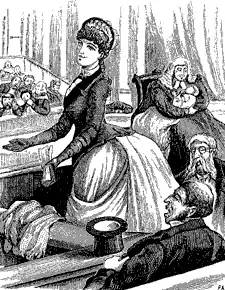
1908
 Denmark (limited to local elections)
Denmark (limited to local elections).svg.png.webp) Victoria (Australian state): last Australian state to enact equal voting rights for women in state elections
Victoria (Australian state): last Australian state to enact equal voting rights for women in state elections
1910s
1910
1911
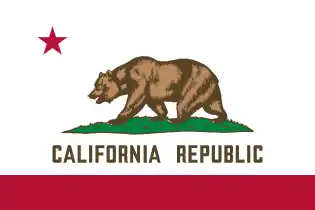 California (US state)
California (US state) Argentina: Julieta Lanteri, doctor and leading feminist activist, votes in the election for the Buenos Aires City Legislature. She had realized that the government did not make specifications regarding gender, and appealed to justice successfully, becoming the first South American woman to vote.
Argentina: Julieta Lanteri, doctor and leading feminist activist, votes in the election for the Buenos Aires City Legislature. She had realized that the government did not make specifications regarding gender, and appealed to justice successfully, becoming the first South American woman to vote. Portugal: Carolina Beatriz Ângelo becomes the first Portuguese woman to vote due to a legal technicality; the law is shortly thereafter altered to specify only literate male citizens over the age of 21 had the right to vote.
Portugal: Carolina Beatriz Ângelo becomes the first Portuguese woman to vote due to a legal technicality; the law is shortly thereafter altered to specify only literate male citizens over the age of 21 had the right to vote.
1912
1913
1914
1915

1916
 Manitoba (Canadian province)
Manitoba (Canadian province) Saskatchewan (Canadian province)
Saskatchewan (Canadian province) Alberta (Canadian province)
Alberta (Canadian province)
1917
 New York (US State)
New York (US State).svg.png.webp) Belarusian People's Republic
Belarusian People's Republic Estonia
Estonia Latvia (as an independent country)
Latvia (as an independent country) Lithuania
Lithuania British Columbia (Canadian province)
British Columbia (Canadian province) Ontario (Canadian province)
Ontario (Canadian province).svg.png.webp) Canada (limited to war widows, women serving overseas, and women with family serving overseas)
Canada (limited to war widows, women serving overseas, and women with family serving overseas) Russian Republic
Russian Republic Ukrainian People's Republic
Ukrainian People's Republic Uruguay (per Constitution)
Uruguay (per Constitution) Crimean People's Republic[42]
Crimean People's Republic[42]
1918
 Michigan (US state)
Michigan (US state) South Dakota (US state)
South Dakota (US state) Oklahoma (US state)
Oklahoma (US state) Austria
Austria Azerbaijan[43]
Azerbaijan[43].svg.png.webp) Canada (limited to women over 21, "not alien-born", and meeting provincially determined property qualifications)
Canada (limited to women over 21, "not alien-born", and meeting provincially determined property qualifications) Denmark First four women elected to the Folketing
Denmark First four women elected to the Folketing Nova Scotia (Canadian province)
Nova Scotia (Canadian province).svg.png.webp) Germany
Germany.svg.png.webp) Hungary Limited to women over the age of 24 who were literate. (full suffrage granted in 1945)[44]
Hungary Limited to women over the age of 24 who were literate. (full suffrage granted in 1945)[44] Poland (just after regaining independence)
Poland (just after regaining independence).svg.png.webp) Russian SFSR[45] (Soviet Union)
Russian SFSR[45] (Soviet Union) Kyrgyz SSR (Soviet Union)
Kyrgyz SSR (Soviet Union) Trinidad and Tobago (limited to women over 30; conditional on ownership of property and qualifications of their husbands. Women over 21 given the franchise in 1928)
Trinidad and Tobago (limited to women over 30; conditional on ownership of property and qualifications of their husbands. Women over 21 given the franchise in 1928) United Kingdom of Great Britain and Ireland (limited to women over 30, compared to 21 for men and 19 for those who had fought in World War One; various property qualifications remained; see Representation of the People Act 1918.)
United Kingdom of Great Britain and Ireland (limited to women over 30, compared to 21 for men and 19 for those who had fought in World War One; various property qualifications remained; see Representation of the People Act 1918.)
1919
 Afghanistan
Afghanistan .svg.png.webp) First Republic of Armenia[46][47]
First Republic of Armenia[46][47].svg.png.webp) Belgium (limited to voting at municipal level)
Belgium (limited to voting at municipal level) Georgia
Georgia.svg.png.webp) Hungarian Soviet Republic universal suffrage to trade union members only[44]
Hungarian Soviet Republic universal suffrage to trade union members only[44] Isle of Man - all adults could vote or be elected - Widows and single women who owned property could vote from 1881.
Isle of Man - all adults could vote or be elected - Widows and single women who owned property could vote from 1881. Jamaica (British Crown Colony) Limited suffrage granted to women of twenty-five years or more, who earned £50 or more per year, or paid taxes of £2. (Universal adult suffrage not granted until 1944.)[48][49]
Jamaica (British Crown Colony) Limited suffrage granted to women of twenty-five years or more, who earned £50 or more per year, or paid taxes of £2. (Universal adult suffrage not granted until 1944.)[48][49] Czechoslovakia (voting at local/municipal level)
Czechoslovakia (voting at local/municipal level) Luxembourg
Luxembourg Netherlands (right to stand in election protected in 1917)
Netherlands (right to stand in election protected in 1917) New Zealand (women gain the right to stand for election into parliament; right to vote for Members of Parliament since 1893)
New Zealand (women gain the right to stand for election into parliament; right to vote for Members of Parliament since 1893) New Brunswick (Canadian province) (limited to voting. Women's right to stand for office protected in 1934)
New Brunswick (Canadian province) (limited to voting. Women's right to stand for office protected in 1934) Minnesota (US state)
Minnesota (US state).svg.png.webp) Southern Rhodesia (British Crown Colony) (women now allowed to vote and stand for election into parliament)
Southern Rhodesia (British Crown Colony) (women now allowed to vote and stand for election into parliament)- South West Caucasian Republic
 Sweden (legalised, first election 1921)
Sweden (legalised, first election 1921)
1920s
1920
.svg.png.webp) Albania
Albania Czechoslovakia (the newly adopted constitution guarantees universal suffrage incl. women and the first vote to the National Assembly is held; politically, the women's suffrage is guaranteed already in the Declaration of Independence from 1918, and women vote in local elections in 1919)
Czechoslovakia (the newly adopted constitution guarantees universal suffrage incl. women and the first vote to the National Assembly is held; politically, the women's suffrage is guaranteed already in the Declaration of Independence from 1918, and women vote in local elections in 1919) Travancore Kingdom, Princely Indian State in the British Empire. It was the first place in India to grant women's suffrage, but did not grant the right to stand in elections.[50]
Travancore Kingdom, Princely Indian State in the British Empire. It was the first place in India to grant women's suffrage, but did not grant the right to stand in elections.[50] Jhalawar State 2nd of the princely states in India to grant women enfranchisement.[50]
Jhalawar State 2nd of the princely states in India to grant women enfranchisement.[50] United States (all remaining states by amendment to federal Constitution)
United States (all remaining states by amendment to federal Constitution)
1921
.svg.png.webp) Azerbaijan SSR[51] (Soviet Union)
Azerbaijan SSR[51] (Soviet Union) British Raj, Madras Presidency was the first of the provinces in the British Raj to grant women's suffrage, though there were income and property restrictions and women were not allowed to stand for office.[52]
British Raj, Madras Presidency was the first of the provinces in the British Raj to grant women's suffrage, though there were income and property restrictions and women were not allowed to stand for office.[52] British Raj, Bombay Presidency became the second of the provinces in British India to grant the right for women to vote with income and property restrictions and an inability to stand in elections.[53]
British Raj, Bombay Presidency became the second of the provinces in British India to grant the right for women to vote with income and property restrictions and an inability to stand in elections.[53]- Federal Republic of Central America (Costa Rica, El Salvador, Guatemala, and Honduras) established in the 9 September 1921 federal constitution that married or widowed literate women of 21 or more, or single literate women of 25 or more could vote or hold office as long as they met any property requirements.[54] When the Federation fell apart the following year, women lost the right to vote.[55][56]
1922
 British Raj, Burma Province became the third province of British India to grant limited suffrage, but not the right to stand in elections.[57]
British Raj, Burma Province became the third province of British India to grant limited suffrage, but not the right to stand in elections.[57] Irish Free State (equal parliamentary (Oireachtas) suffrage to that of men upon independence from UK. Partial suffrage granted as part of UK in 1918.)
Irish Free State (equal parliamentary (Oireachtas) suffrage to that of men upon independence from UK. Partial suffrage granted as part of UK in 1918.)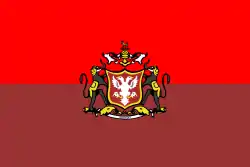 Kingdom of Mysore became the 3rd of India's princely estates to grant women's suffrage.[58]
Kingdom of Mysore became the 3rd of India's princely estates to grant women's suffrage.[58] Prince Edward Island (Canadian province)
Prince Edward Island (Canadian province) Yucatán (Mexican state) (limited to regional and congressional elections)
Yucatán (Mexican state) (limited to regional and congressional elections)
1923
 British Raj, United Provinces of Agra and Oudh became the 4th province in British India to grant limited suffrage, though women could not stand for office.[52]
British Raj, United Provinces of Agra and Oudh became the 4th province in British India to grant limited suffrage, though women could not stand for office.[52] Rajkot State became the first princely state and first entity in British India to grant women both the right to vote and stand in elections.[58][59]
Rajkot State became the first princely state and first entity in British India to grant women both the right to vote and stand in elections.[58][59]
1924
 British Raj, Assam Province became the 5th province in British India to grant suffrage with income and property restrictions, as well as the inability to stand for office.[60]
British Raj, Assam Province became the 5th province in British India to grant suffrage with income and property restrictions, as well as the inability to stand for office.[60] Ecuador (a doctor, Matilde Hidalgo de Prócel, sues and wins the right to vote)
Ecuador (a doctor, Matilde Hidalgo de Prócel, sues and wins the right to vote) Kazakh SSR (Soviet Union)
Kazakh SSR (Soviet Union)- Kingdom of Cochin one of the princely states of British India granted both suffrage and the right for women to stand in elections.[58][52]
 Mongolia (no electoral system in place prior to this year)
Mongolia (no electoral system in place prior to this year) Saint Lucia
Saint Lucia.svg.png.webp) Spain (limited to single women and widows in local elections. First women mayors)
Spain (limited to single women and widows in local elections. First women mayors) Tajik SSR (Soviet Union)
Tajik SSR (Soviet Union)
1925
 British Raj, Bengal Presidency became the 6th province in British India to grant limited suffrage without the ability for women to stand in elections.[52]
British Raj, Bengal Presidency became the 6th province in British India to grant limited suffrage without the ability for women to stand in elections.[52] Dominion of Newfoundland (limited to women 25 and older; men can vote at age 21. Equal suffrage granted in 1946.)
Dominion of Newfoundland (limited to women 25 and older; men can vote at age 21. Equal suffrage granted in 1946.) Italy (limited to local elections)
Italy (limited to local elections)
1926
 British Raj, Punjab Province became the 7th province in British India to grant limited suffrage without the ability for women to stand in elections.[61]
British Raj, Punjab Province became the 7th province in British India to grant limited suffrage without the ability for women to stand in elections.[61] British Raj was empowered by the British Parliament to amend the voting regulations and allow women to stand for office, if the province in which they resided granted women's suffrage.[52]
British Raj was empowered by the British Parliament to amend the voting regulations and allow women to stand for office, if the province in which they resided granted women's suffrage.[52]
1927
 British Raj Central Provinces became the 8th province in British India to grant suffrage to women.[52]
British Raj Central Provinces became the 8th province in British India to grant suffrage to women.[52].svg.png.webp) Turkmen SSR (Soviet Union)
Turkmen SSR (Soviet Union) Uruguay (women's suffrage is broadcast for the first time in 1927, in the plebiscite of Cerro Chato)
Uruguay (women's suffrage is broadcast for the first time in 1927, in the plebiscite of Cerro Chato)
1928
 United Kingdom (franchise made equal to that for men by the Representation of the People Act 1928)
United Kingdom (franchise made equal to that for men by the Representation of the People Act 1928)
1929
 British Raj Bihar and Orissa Province became the last of the provinces in British India to grant women's limited suffrage with income and property restrictions.[52]
British Raj Bihar and Orissa Province became the last of the provinces in British India to grant women's limited suffrage with income and property restrictions.[52] Ecuador (the right of women to vote is written into the Constitution)
Ecuador (the right of women to vote is written into the Constitution) Puerto Rico (literate women given the right to vote. Equal suffrage granted in 1935.)
Puerto Rico (literate women given the right to vote. Equal suffrage granted in 1935.) Romania (limited to local elections only, with restrictions)[62]
Romania (limited to local elections only, with restrictions)[62]
1930s
1930
.svg.png.webp) South Africa (Women's Enfranchisement Act, 1930: limited to white women on the same basis as white men.)
South Africa (Women's Enfranchisement Act, 1930: limited to white women on the same basis as white men.) Turkey (limited to municipal elections).[63]
Turkey (limited to municipal elections).[63]
1931
.svg.png.webp) Ceylon
Ceylon Chile (limited to municipal level for female owners of real estate under Legislative Decree No. 320)
Chile (limited to municipal level for female owners of real estate under Legislative Decree No. 320) Portugal (with restrictions following level of education)
Portugal (with restrictions following level of education).svg.png.webp) Spain (universal suffrage)
Spain (universal suffrage)
1932
.jpg.webp)
1934
 Chile (limited to municipal level under Law No. 5,357)
Chile (limited to municipal level under Law No. 5,357) Cuba
Cuba Portugal (suffrage is expanded)
Portugal (suffrage is expanded) Tabasco (Mexican state) (limited to regional and congress elections only)
Tabasco (Mexican state) (limited to regional and congress elections only) Turkey (parliamentary elections; full voting rights and rights to be elected for any public office including the National Parliament, which resulted in 18 female members of the parliament to stand for office from 18 different provinces in the 1935 National Parliament elections).[64]
Turkey (parliamentary elections; full voting rights and rights to be elected for any public office including the National Parliament, which resulted in 18 female members of the parliament to stand for office from 18 different provinces in the 1935 National Parliament elections).[64]
1935
 British Raj
British Raj British Burma (women are granted the right to vote)[32]
British Burma (women are granted the right to vote)[32] Irish Free State (equal suffrage at local elections;[65] partial suffrage as part of the UK from 1869, extended in 1918.[66])
Irish Free State (equal suffrage at local elections;[65] partial suffrage as part of the UK from 1869, extended in 1918.[66])
1937
 Bulgaria (limited to mothers with legitimate children voting in local elections)[67]
Bulgaria (limited to mothers with legitimate children voting in local elections)[67] Dutch East Indies (for European women only)
Dutch East Indies (for European women only).svg.png.webp) Philippines[32]
Philippines[32]
1938
 Bolivia
Bolivia.svg.png.webp) Uzbek SSR (Soviet Union)
Uzbek SSR (Soviet Union) Western Samoa (European women)[68]
Western Samoa (European women)[68]
1939
 El Salvador (with restrictions requiring literacy and a higher age)[69]
El Salvador (with restrictions requiring literacy and a higher age)[69] Romania (women are granted suffrage on equal terms with men with restrictions on both men and women; in practice the restrictions affected women more than men)[70][71]
Romania (women are granted suffrage on equal terms with men with restrictions on both men and women; in practice the restrictions affected women more than men)[70][71].svg.png.webp) South West Africa (white women)[72]
South West Africa (white women)[72]
1940s
1940
 Quebec (Canadian province)
Quebec (Canadian province).svg.png.webp) Moldavian SSR (Soviet Union) (as part of Romania, partial suffrage from 1929, extended in 1939)
Moldavian SSR (Soviet Union) (as part of Romania, partial suffrage from 1929, extended in 1939)
1941
 Dutch East Indies (limited to European women only)
Dutch East Indies (limited to European women only) Panama (with restrictions. Full suffrage granted in 1946.)
Panama (with restrictions. Full suffrage granted in 1946.)
1942
1944
1945
 France
France Dutch East Indies
Dutch East Indies Guatemala (Literate only)[75]
Guatemala (Literate only)[75] Italy[76]
Italy[76] Japan
Japan Senegal
Senegal French Togoland
French Togoland.svg.png.webp) Yugoslavia
Yugoslavia
1946
 Cameroon
Cameroon French Somaliland
French Somaliland Kenya
Kenya North Korea[77]
North Korea[77] Liberia (Americo women only; indigenous men and women were not enfranchised until 1951)
Liberia (Americo women only; indigenous men and women were not enfranchised until 1951) Mandatory Palestine
Mandatory Palestine Portugal (expands suffrage)
Portugal (expands suffrage) Romania (extended to full rights)[70]
Romania (extended to full rights)[70]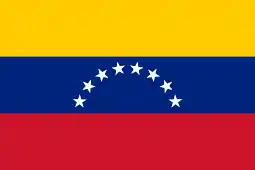 Venezuela
Venezuela Vietnam
Vietnam
1947
 Argentina[78]
Argentina[78] Republic of China (includes Taiwan: with restrictions)
Republic of China (includes Taiwan: with restrictions).svg.png.webp) Malta
Malta Mexico (limited to municipal level)
Mexico (limited to municipal level) India (establishment of the state)
India (establishment of the state) Nepal
Nepal Pakistan (establishment of the state)
Pakistan (establishment of the state) Singapore
Singapore
1948
 United Nations adopted The Universal Declaration of Human Rights Article 21[79]
United Nations adopted The Universal Declaration of Human Rights Article 21[79].svg.png.webp) Belgium
Belgium Israel (establishment of the state)
Israel (establishment of the state) South Korea
South Korea Niger
Niger Dutch Surinam
Dutch Surinam
1949
 Chile (right expanded to all elections on January 8 by Law No. 9,292)
Chile (right expanded to all elections on January 8 by Law No. 9,292).svg.png.webp) Netherlands Antilles [80]
Netherlands Antilles [80] People's Republic of China (establishment of the state)
People's Republic of China (establishment of the state) Costa Rica
Costa Rica Syria
Syria
1950s
1950
 Barbados
Barbados El Salvador (all restrictions removed)[69]
El Salvador (all restrictions removed)[69]
1951
 Antigua and Barbuda
Antigua and Barbuda Dominica
Dominica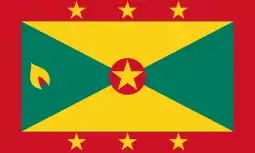 Grenada
Grenada Nepal
Nepal Saint Christopher-Nevis-Anguilla
Saint Christopher-Nevis-Anguilla Saint Vincent and the Grenadines
Saint Vincent and the Grenadines Ghana
Ghana
1952
1953
 Bhutan
Bhutan.svg.png.webp) British Guiana
British Guiana Mexico (all women and for national elections)
Mexico (all women and for national elections)
1954
1955
1956
1957
 Colombia (by Constitution)[81]
Colombia (by Constitution)[81] Malaya
Malaya.svg.png.webp) Southern Rhodesia
Southern Rhodesia Lebanon (nationwide)
Lebanon (nationwide)
1958
 Upper Volta
Upper Volta Chad
Chad Guinea
Guinea Laos
Laos Nigeria (South)
Nigeria (South)
1959
1960s
1960
1961
1962
 Algeria
Algeria.svg.png.webp) Australia (universal suffrage Australian Aboriginals men and women)
Australia (universal suffrage Australian Aboriginals men and women) Bahamas
Bahamas Brunei (revoked) (including men)
Brunei (revoked) (including men) Monaco
Monaco Uganda
Uganda.svg.png.webp) Northern Rhodesia
Northern Rhodesia
1963
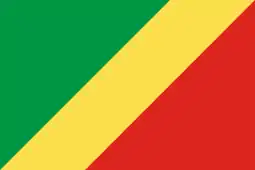 Congo
Congo Equatorial Guinea
Equatorial Guinea Fiji
Fiji.svg.png.webp) Iran (after a referendum)
Iran (after a referendum) Kenya
Kenya Morocco
Morocco
1964
1965
1966
1967
 Democratic Republic of the Congo
Democratic Republic of the Congo Ecuador (women's vote made obligatory, like that of men's)[82]
Ecuador (women's vote made obligatory, like that of men's)[82] Kiribati
Kiribati Tuvalu
Tuvalu South Yemen
South Yemen
1968
 Basel-Landschaft (Swiss canton)
Basel-Landschaft (Swiss canton)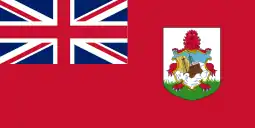 Bermuda (universal)
Bermuda (universal) Nauru
Nauru Portugal (few electoral rights were reserved for men)
Portugal (few electoral rights were reserved for men)
1970s
1970
1971
 Switzerland (federal level)
Switzerland (federal level)
1972
 Bangladesh (suffrage enshrined in constitution adopted after independence) (For pre 1971 rights see British Raj 1935 and East/West Pakistan 1947.)
Bangladesh (suffrage enshrined in constitution adopted after independence) (For pre 1971 rights see British Raj 1935 and East/West Pakistan 1947.)
1973
1974
1975
1976
 Timor Timur (Indonesia)
Timor Timur (Indonesia) Portugal (all restrictions were lifted after the Carnation Revolution)[85][86]
Portugal (all restrictions were lifted after the Carnation Revolution)[85][86]
1977
1978
1990s
1991
 Appenzell Innerrhoden (Swiss canton) was forced to accept women's suffrage by the Federal Supreme Court of Switzerland
Appenzell Innerrhoden (Swiss canton) was forced to accept women's suffrage by the Federal Supreme Court of Switzerland Western Samoa (universal suffrage)
Western Samoa (universal suffrage)
1996
.svg.png.webp) Afghanistan [88] (revoked by Taliban)
Afghanistan [88] (revoked by Taliban)
1999
21st century
2000s
2001
.svg.png.webp) Afghanistan[88] (re-granted after the fall of Taliban)
Afghanistan[88] (re-granted after the fall of Taliban)
2003
2005
2006
 United Arab Emirates (UAE) (limited suffrage for both men and women).[92]
United Arab Emirates (UAE) (limited suffrage for both men and women).[92]
2010s
2015
Note: in some countries both men and women have limited suffrage. For example, in Brunei, which is a sultanate, there are no national elections, and voting exists only on local issues.[94] In the United Arab Emirates the rulers of the seven emirates each select a proportion of voters for the Federal National Council (FNC) that together account for about 12% of Emirati citizens.[92]
See also
- Timeline of first women's suffrage in majority-Muslim countries
- Timeline of women's suffrage in the United States
- Timeline of women's legal rights (other than voting)
- List of the first female holders of political offices in Europe
- List of the first female members of parliament by country
- List of suffragists and suffragettes
- List of women's rights activists
- List of women pacifists and peace activists
- Women's suffrage organizations
References
- "Tynwald - Parliament of the Isle of Man - Home". www.tynwald.org.im. Retrieved 28 June 2019.
- "New Zealand women and the vote - Women and the vote | NZHistory, New Zealand history online". nzhistory.govt.nz. Retrieved 25 November 2019.
- 1894: Women’s suffrage, South Australia, National Museum of Australia
- Karlsson Sjögren, Åsa, Männen, kvinnorna och rösträtten: medborgarskap och representation 1723–1866 [Men, women and suffrage: citizenship and representation 1723–1866], Carlsson, Stockholm, 2006 (in Swedish)
- Brief history of the Finnish Parliament
- Centenary of women's full political rights in Finland
- "Bilanz der ständigen Wohnbevölkerung nach Kanton, 1991–2016" (XLS) (official site). Neuchâtel, Switzerland: Federal Statistical Office, FSO. 30 August 2017. Retrieved 7 May 2018.
- Smith, Bonnie G., ed. (2008). The Oxford Encyclopedia of Women in World History. Oxford University Press. pp. 171 vol 1. ISBN 9780195148909.
- "Women dominate new Swiss cabinet". BBC News.
- Gorney, Cynthia (12 December 2015). "In a Historic Election, Saudi Women Cast First-Ever Ballots". National Geographic.
-
- Wierdsma Schik, P. (1857). "Akademisch proefschrift over de staatsregtelijke geschiedenis der Staten van Friesland van 1581 tot 1795". Google Books (in Dutch). W. Eekhoff. p. 18. Retrieved 11 June 2018.
- Lucien Felli, "La renaissance du Paolisme". M. Bartoli, Pasquale Paoli, père de la patrie corse, Albatros, 1974, p. 29. "Il est un point où le caractère précurseur des institutions paolines est particulièrement accusé, c'est celui du suffrage en ce qu'il était entendu de manière très large. Il prévoyait en effet le vote des femmes qui, à l'époque, ne votaient pas en France."
- "Lydia Chapin Taft Biography Women's Suffrage by Frances Stanford". Humanities 360. Archived from the original on 9 January 2014.
- "Women and the vote: Page 5 – World suffrage timeline". Nzhistory.net.nz. New Zealand History. Retrieved 12 October 2015.
- Sai, David Keanu (12 March 1998). "Memorandum—Re: Suffrage of Female Subjects". HawaiianKingdom.org. Honolulu, Hawaii: Acting Council of Regency. Archived from the original on 21 October 2017. Retrieved 14 December 2019.
- Kauanui, J. Kēhaulani (2018). Paradoxes of Hawaiian Sovereignty: Land, Sex, and the Colonial Politics of State Nationalism. Durham, North Carolina: Duke University Press. p. 190. ISBN 978-0-822-37049-9.
- "La Toscana festeggia 70 anni di voto alle donne con Irma, 108 anni - Intoscana.it". www.intoscana.it (in Italian). Retrieved 25 November 2019.
- M C Mirrow, Latin American Constitutionalism: The Constitution of Cadiz and its legacy
- P. Orman Ray: Woman Suffrage in Foreign Countries. The American Political Science Review. Vol. 12, No. 3 (Aug. 1918), pp. 469–474
- "Women in Parliament – Parliament of Victoria". Parliament.vic.gov.au. Retrieved 6 May 2013.
- "Female Suffrage before 1918", The History of the Parliamentary Franchise, House of Commons Library, 1 March 2013, pp. 37–9, retrieved 16 March 2016,
by 1900 the number of women registered for the local government franchise in England was over 1 million
- Heater, Derek (2006). Citizenship in Britain: A History. Edinburgh University Press. p. 136. ISBN 9780748626724.
- "Women's rights". The National Archives. Retrieved 11 February 2015.
- "Which Act Gave Women the Right to Vote in Britain?". Synonym. Retrieved 11 February 2015.
- Rea, Tom. "Right Choice, Wrong Reasons: Wyoming women win the right to vote". wyohistory.org. Retrieved 26 August 2015.
- "Gaining, Losing, and Winning Back the Vote: The Story of Utah Women's Suffrage". Better Days Curriculum. 9 February 2018. Retrieved 9 November 2020.
- Čepulo, Dalibor (2000). "Status and organization of Croatian townships under the Statute on Ordering the Township Municipalities of 1881". Hrvatska Javna Uprava. 2: 83–120.
- Myers, Rebecca (28 May 2013). "General History of Women's Suffrage in Britain". The Independent. Retrieved 26 August 2015.
- "Canada-WomensVote-WomenSuffrage". Faculty.marianopolis.edu. 27 January 1916. Retrieved 6 May 2013.
- United States House of Representatives (30 April 1888). "House Joint Resolution (H.J. Res.) 159, Proposing an Amendment to the Constitution to Extend the Right to Vote to Widows and Spinsters who are Property Holders". National Archives Catalog. National Archives and Records Administration. Retrieved 29 July 2016.
- "Wee, Small Republics: A Few Examples of Popular Government," Hawaiian Gazette, Nov 1, 1895, p 1
- Women's Suffrage
- "World suffrage timeline - Women and the vote | NZHistory, New Zealand history online". nzhistory.govt.nz. Retrieved 25 November 2019.
- Chapin, Laura (21 August 2010). "Colorado Led the Way on Women's Suffrage". usnews.com. Retrieved 26 August 2015.
- Fenna, Alan; Robbins, Jane; Summers, John (5 September 2013). Government Politics in Australia. Pearson Higher Education AU. pp. 312–. ISBN 978-1-4860-0138-5.
- Bebel, August (12 November 2014). Woman and Socialism (English ed.). Socialist Literature Company. pp. 196–. GGKEY:PAF3FSJXP21.
- Maule, Frances; Porritt, Annie Gertrude Webb (1917). Woman Suffrage: History, Arguments, and Results : a Collection of Six Popular Booklets Covering Practically the Entire Field of Suffrage Claims and Evidence : Designed Especially for the Convenience of Suffrage Speakers and Writers and for the Use of Debaters and Libraries. National Woman Suffrage Publishing Company.
- "Constitution of the State of Utah (Article IV Section 1)". 4 January 1896.
- Indigenous Suffrage Timeline, Government of Queensland
- Documenting a Democracy, Museum of Australian Democracy, retrieved 13 October 2011
- Bourdiol, Julien (1908), Condition internationale des Nouvelles-Hebrides, p 106
- Pipes, Richard (1997). The Formation of the Soviet Union: Communism and Nationalism, 1917–1923. Harvard University Press. p. 81. ISBN 9780674309517.
- Tadeusz Swietochowski. Russian Azerbaijan, 1905–1920: The Shaping of a National Identity in a Muslim Community. Cambridge University Press, 2004. ISBN 0-521-52245-5, 978-0-521-52245-8, p. 144
- Sulkunen, Irma; Nevala-Nurmi, Seija-L eena; Markkola, Pirjo, eds. (2009). Suffrage, Gender and Citizenship: international perspectives on parliamentary reforms. Newcastle upon Tyne, England: Cambridge Scholars. pp. 242–243. ISBN 978-1-4438-0162-1.
- See article 4 of the 1918 constitution of the R.S.F.S.R..
- Badalyan, Lena (5 December 2018). "Women's Suffrage: The Armenian Formula". Chai Khana. Retrieved 30 November 2018.
- Harutyunyan, Anahit (8 March 2018). Առաջին խորհրդարանի (1919-1920) երեք կին պատգամավորները. aniarc.am (in Armenian). Yerevan, Armenia: Armenian Research Center for Anteriology. Archived from the original on 4 May 2018. Retrieved 11 January 2019.
Three female deputies of the first parliament (1919-1920)
- "History this week:Constitutional Developments in British Guiana and Jamaica between 1890 and 1945 (Part 3)". Stabroek News. Georgetown, Guyana. 13 May 2010. Archived from the original on 6 November 2018. Retrieved 16 February 2019.
- "Continuation of the Session of the Honourable Legislative Council". The Gleaner. Kingston, Jamaica. 17 May 1919. p. 6. Retrieved 16 February 2019 – via Newspaperarchive.com.

- Bennett, Stanley Reed, ed. (1922). "The Woman Suffrage Movement". The Indian Year Book. London: Coleman & Co., Ltd. pp. 533–536. OCLC 4347383.
- Lewis, Jone Johnson. "International Woman Suffrage Timeline". About.com. Retrieved 2 November 2013.
- Deivanai, P. (May 2003). Feminist Struggle for Universal Suffrage in India with Special Reference to Tamilnadu 1917 to 1952 (PhD). Coimbatore, Tamil Nadu: Bharathiar University. pp. 128–131. hdl:10603/101938.
- Odeyar, S. B. (1989). The Role of Marathi Women in the Struggle for India's Freedom (PhD). Kolhapur, Maharashtra: Shivaji University. pp. 186–187. hdl:10603/140691.
- Perry, Edward (February 1922). "Central American Union". The Hispanic American Historical Review. Durham, North Carolina: Duke University Press. 5 (1): 39–42. doi:10.2307/2505979. ISSN 0018-2168. JSTOR 2505979.
- Cañas Dinarte, Carlos (7 March 2018). "La manifestación de mujeres del 25 de diciembre de 1922" [The Demonstration of Women on December 25, 1922]. issuu.com (in Spanish). El Salvador. p. 1. Retrieved 14 January 2020.
- Leonard, Thomas (2012). "Central American Conference, Washington, 1923". In Leonard, Thomas; Buchenau, Jurgen; Longley, Kyle; Mount, Graeme (eds.). Encyclopedia of U.S. - Latin American Relations. 1: A-E. Los Angeles, California: SAGE Publications. pp. 156–157. ISBN 978-1-60871-792-7.
- "Women Suffrage in Burma". The Woman's Leader. London: Common Cause Publishing Co., Ltd. XIV (20): 153. 16 June 1922. OCLC 5796207. Retrieved 26 November 2019 – via LSE Digital library.
- Bennett, Stanley Reed, ed. (1924). "The Woman Suffrage Movement". The Indian Year Book. London: Coleman & Co., Ltd. pp. 409–411. OCLC 4347383.
- "Popular Government in Rajkot: Universal Franchise". International Woman Suffrage News. London: International Woman Suffrage Alliance. 17 (9): 156. July 1923. OCLC 41224540. Retrieved 26 November 2019 – via LSE Digital library.
- Bennett, Stanley Reed; Low, Francis, eds. (1936). "The Woman Suffrage Movement". The Indian Year Book. London: Coleman & Co., Ltd. pp. 620–622. OCLC 4347383.
- Pearson, Gail (2006). "9. Tradition, Law and the Female Suffrage Movement in India". In Edwards, Louise; Roces, Mina (eds.). Women's Suffrage in Asia: Gender, Nationalism and Democracy. London, England: Routledge. p. 430. ISBN 978-1-134-32035-6.
- Popescu, Camelia. "Lupta pentru dreptul de vot feminin în România interbelică". Historia.ro. Adevărul Holding. Retrieved 4 January 2014.
- "This Day in World History: February 6, 1935 – Turkey Holds First Election That Allows Women to Vote". OUP Blog.
- "This Day in World History: February 6, 1935 – Turkey Holds First Election That Allows Women to Vote". OUP Blog.
- "Local Government (Extension of Franchise) Act, 1935, Section 2". Irish Statute Book. Retrieved 4 November 2017.; O'Kelly, Seán T. (1 June 1933). "Dáil Éireann debate - Thursday, 1 Jun 1933: Cement (No. 2) Bill, 1933—Money Resolution. - Local Government (Extension of Franchise) Bill, 1933.—Second Stage". Dáil Éireann Debates. Vol.47 No.18 p.21 cc.2301–2303. Retrieved 4 November 2017.
The qualifications are to be found in the Representation of the People Act, 1918, and except for an alteration in the qualifying date there has been no change in the law in respect of this franchise.... The Bill extends local government franchise to every person who is a citizen of Saorstát Eireann who has attained the age of 21 years and is not subject to legal incapacity
- Fraser, Hugh (1918). "Franchises (women)". The Representation of the people act, 1918 : with explanatory notes. London: Sweet and Maxwell. pp. 73–76.
- Rodriguez Ruiz, Blanca; Rubio-Marín, Ruth (2012). The Struggle for Female Suffrage in Europe: Voting to Become Citizens. Leiden, The Netherlands: Brill Publishers. p. 329. ISBN 978-90-04-22425-4.
- Extended franchise in Samoa Pacific Islands Monthly, November 1938, p52
- "Situacion de la Mujer rural en El Salvador" (PDF). Retrieved 25 November 2019.
- "Summary: Rights to Vote in Romania". Retrieved 6 October 2014.
- "CONSTITUŢIA: României din 1938". Retrieved 6 October 2014.
- S. Low (1955) Guide to Southern Africa, p53
- "The Evolution of Bermuda's Franchise". Parliamentary Registry Bermuda.
- Daskalova, Krassimira (2004). "The Women's Movement in Bulgaria in a Life Story". Women's History Review. Milton Park, England: Taylor and Francis. 13 (1): 94. doi:10.1080/09612020400200384. ISSN 0961-2025.
- "Publications | International IDEA" (PDF). www.idea.int. Retrieved 28 June 2019.
- (in Italian) Extension to the women of the right to vote Archived 2008-05-26 at the Wayback Machine
- "Women's Suffrage". Ipu.org. 23 May 1997. Retrieved 6 May 2013.
- Gregory Hammond, The Women's Suffrage Movement and Feminism in Argentina From Roca to Peron (U of New Mexico Press; 2011)
- "The Universal Declaration of Human Rights". www.un.org. Retrieved 28 June 2019.
- http://www.everyculture.com/Ma-Ni/Netherlands-Antilles.html
- http://www.banrepcultural.org/blaavirtual/linea-de-tiempo/voto-mujer-frente-nacional
- "El Voto Feminino en Ecuador, published 6 April 1991, accessed 1 November 2010". Hoy.com.ec. 14 October 2011. Retrieved 6 May 2013.
- "Women's Suffrage". archive.ipu.org. Retrieved 28 June 2019.
- Darwish, Adel (25 October 2002). "Bahrain's women vote for first time". The Daily Telegraph. London. Retrieved 25 May 2010.
- "Publications | International IDEA" (PDF). www.idea.int. Retrieved 28 June 2019.
- "BBC - Radio 4 Woman's Hour - Timeline:When women got the vote". www.bbc.co.uk. Retrieved 28 June 2019.
- African Women and Children. Apollo Rwormie. 2001. ISBN 9780275962180.
- "Woman Suffrage Timeline International – Winning the Vote Around the World". Womenshistory.about.com. 25 April 1908. Retrieved 6 May 2013.
- United Nations High Commissioner for Refugees. "Women's Rights in the Middle East and North Africa - Qatar". Refworld. Retrieved 28 June 2019.
- "Qatar". freedomhouse.org. 26 February 2013. Retrieved 28 June 2019.
- "Kuwait grants women right to vote". CNN. 16 May 2005. Retrieved 13 April 2014.
- "Middle East :: United Arab Emirates — The World Factbook - Central Intelligence Agency". www.cia.gov. Retrieved 28 June 2019.
- "Women in Saudi Arabia 'to vote and run in elections'". BBC News. London. 25 September 2011. Retrieved 25 September 2011.
- "East Asia/Southeast Asia :: Brunei — The World Factbook - Central Intelligence Agency". www.cia.gov. Retrieved 28 June 2019.
- https://web.archive.org/web/20070610120752/http://www.hist.uu.se/historikermote05/program/Politik/52_Karlsson_Sjogren.pdf
- www.iraqinationality.gov.iq/attach/iraqi_constitution.pdf
External links
| Wikimedia Commons has media related to Suffragettes. |
- Google Spreadsheet with map—above timeline data has been tabulated and can be viewed on a world map for any given year.
